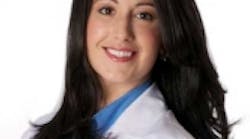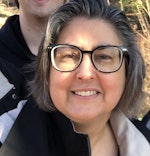Serving the deaf and hard-of-hearing patient population: an interview with Dr. Sabrina Magid
March 5, 2012
Sabrina Magid, DMD, is a young dentist in Harrison, N.Y., who is uniquely qualified to serve an important part of the patient population that includes the deaf and hard-of-hearing. I recently had the opportunity to ask Dr. Magid a few questions about her practice and her involvement with these patients.DentistryIQ: Explain what influenced you to want to work with the deaf and hard-of-hearing as early as high school?Dr. Magid: A very close friend was in jeopardy of losing his hearing, so I decided to take some American Sign Language (ASL) night classes at the New York School for the Deaf. As I learned more of this beautiful language, I also learned that there is a rich deaf culture that many of us who are hearing know nothing about. I found it so compelling that I decided to share this knowledge of ASL and deaf culture with my high school classmates. Along with another friend, I started a club in my high school to teach classmates basic sign language and how to interact with students at the New York School for the Deaf. I was happy to learn that the club continued after I graduated.DentistryIQ: What steps did you take to learn the necessary skills to communicate with this segment of the population?Dr. Magid: In addition to taking classes at the New York School for the Deaf, I had to keep up my own skills when starting clubs and teaching others basic sign language. While in college at Duke University, I initiated and co-taught an "Introduction to American Sign Language and Deaf Culture" course for three years. Each time there was a waiting list twice the class size of people wanting to take the course. I also started a small club teaching basic sign language while at the University of Pennsylvania School of Dental Medicine. The deaf and hard-of-hearing patients who came to the school for treatment were assigned to my care, and I shared my experiences with the club. In residency, I extended the hospital program's usual community outreach and took some of my co-residents to a local school for the deaf in Brooklyn, N.Y., to give a dental education presentation and conduct dental screenings for the children. We then had some of the children come to our residency for treatment. As I interacted with deaf patients, I continued to learn more from them about the language, culture, and their needs in the dental setting.DentistryIQ: How did you go about building your patient base with those who are deaf or hard-of-hearing?Dr. Magid: Many of my deaf and hard-of-hearing patients are teachers at the school for the deaf, and they spread the word about our practice to others. I have also been fortunate to have articles written about my work with deaf and hard-of-hearing patients in the local media.DentistryIQ: What do you think is the biggest barrier to serving these patients, and what can be done to make dental care more accessible for patients with these types of challenges?Dr. Magid: It all starts with the ability to make an appointment or to call in case of an emergency. Our deaf and hard-of-hearing patients are given our cell phone numbers so that they can text us directly in case of an emergency. Our office also has an AIM screen name (DrMagidOffice) for immediate contact, and an email address for making appointments and other general communication. Technology can also make the patient much more comfortable during treatment. For instance, while few patients in general are comfortable with the vibration of a drill, I find my deaf patients tend to be particularly sensitive. For many cases, we are able to use a laser or "air abrasion" (think of a windy day at the beach) in place of a drill to remove cavities. DentistryIQ: How do you involve your staff in the care of deaf and hard-of-hearing patients?Dr. Magid: Involving staff can be as basic as simple tips to allow better communication. Our medical history form asks about the mode of communication our deaf and hard-of-hearing patients prefer. They may feel more comfortable lip-reading (and speaking) or signing. It is important to be mindful of staying visible to the patient, especially if he or she plans to lip-read. Do not talk to the patient’s back or cover your face while speaking. Basic sign language skills can go a long way to make a patient comfortable during routine interaction. Even if there is an interpreter present, the ability to look the patient in the eye and sign, “Hello, how are you?” helps to develop a relationship. It is also useful to know how to sign “Are you ok?” in order to make sure the patient is comfortable during treatment, as you would with a hearing patient. One of the hygienists in our practice also knows some sign language for continuity of care. Even if one’s staff did not know much sign language, it is important to be mindful of how a deaf patient might feel in the dental chair. I find that deaf patients often don't get the warning that the treatment is starting, as hearing patients might hear a drill or talking behind them. I am very careful to make sure my patients are comfortable and aware of everything that's going on, including when treatment will begin and when the chair will be going back. DentistryIQ: Are there any particular types of dental technologies that make patient education for this group of people more effective? And if so, how do you use them to enhance patient education and case acceptance? Dr. Magid: For our deaf and hard-of-hearing patients who are comfortable reading text with English grammar, we have a computer program that converts what we say into a microphone to written text on a monitor overhead. This allows us to keep lines of communication open while we are mid-treatment since, during this time, our hands are full and masks are covering our faces, making both lip-reading and signing difficult. We take photos before and during procedures and use nonverbal, graphic explanations to further enhance communication. Our visual aids and intraoral cameras show our patients what we see, giving us a setting to answer any questions. One of my deaf patients actually told me that she felt like an active participant of her own dental care for the first time. For more information about the practice Dr. Sabrina Magid shares with Dr. Kenneth Magid, click here.






